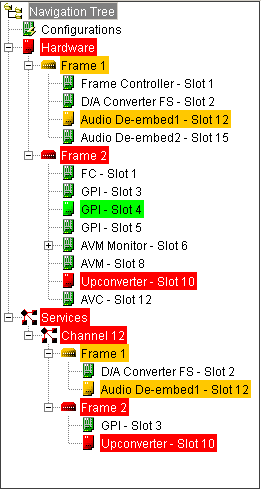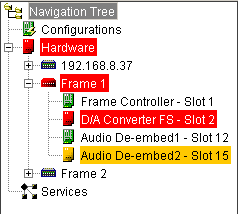
The Hardware and Service super-nodes in the Navigation Tree provide a means of immediately alerting the operator when an alarm conditions exists on a hardware device or in a service. Alarm events that have been setup to generate alerts (see Configuring alarm properties) will color key the nodes presently in alarm and will use the “Rules of Broadcast” to determine which alarm alerts the operator first.

Broadcast of alarms depends on the severity assignment of the alarm. If more than one alarm condition is present for the same device the alarm with the higher severity assignment will take priority over the lower severity assignment. When broadcasting alerts back to the root (Hardware or Services) node, the highest product node severity will take priority. When the higher severity alert has been acknowledged, the next highest severity alert will be shown if one is present. See the below example for a description of this process.

In the figure above, the products in slot 2 and 15 have alarm conditions. The product in slot 2 has a critical alarm and the product in slot 15 has a minor alarm. Even though both products have alarms, the highest severity alarm has been broadcasted to the frame node, and subsequently, the Hardware super-node. The Rules of broadcast allow the operator to address the most critical alarms first.